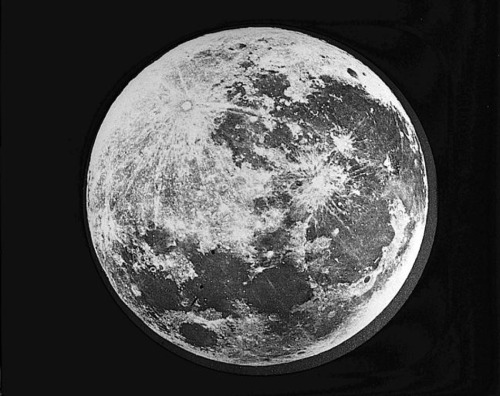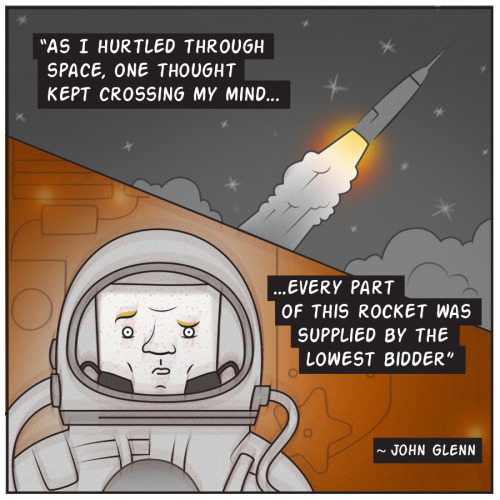The Nebulae Of Orion

The nebulae of Orion
js
More Posts from Needingsomespace and Others

James Hall Nasmyth - Full Moon - 1874 - via Eastman Museum
The Past, Present and Future of Exploration on Mars
Today, we’re celebrating the Red Planet! Since our first close-up picture of Mars in 1965, spacecraft voyages to the Red Planet have revealed a world strangely familiar, yet different enough to challenge our perceptions of what makes a planet work.

You’d think Mars would be easier to understand. Like Earth, Mars has polar ice caps and clouds in its atmosphere, seasonal weather patterns, volcanoes, canyons and other recognizable features. However, conditions on Mars vary wildly from what we know on our own planet.
Join us as we highlight some of the exploration on Mars from the past, present and future:
PAST
Viking Landers

Our Viking Project found a place in history when it became the first U.S. mission to land a spacecraft safely on the surface of Mars and return images of the surface. Two identical spacecraft, each consisting of a lander and an orbiter, were built. Each orbiter-lander pair flew together and entered Mars orbit; the landers then separated and descended to the planet’s surface.

Besides taking photographs and collecting other science data, the two landers conducted three biology experiments designed to look for possible signs of life.
Pathfinder Rover

In 1997, Pathfinder was the first-ever robotic rover to land on the surface of Mars. It was designed as a technology demonstration of a new way to deliver an instrumented lander to the surface of a planet. Mars Pathfinder used an innovative method of directly entering the Martian atmosphere, assisted by a parachute to slow its descent and a giant system of airbags to cushion the impact.

Pathfinder not only accomplished its goal but also returned an unprecedented amount of data and outlived its primary design life.
PRESENT
Spirit and Opportunity

In January 2004, two robotic geologists named Spirit and Opportunity landed on opposite sides of the Red Planet. With far greater mobility than the 1997 Mars Pathfinder rover, these robotic explorers have trekked for miles across the Martian surface, conducting field geology and making atmospheric observations. Carrying identical, sophisticated sets of science instruments, both rovers have found evidence of ancient Martian environments where intermittently wet and habitable conditions existed.

Both missions exceeded their planned 90-day mission lifetimes by many years. Spirit lasted 20 times longer than its original design until its final communication to Earth on March 22, 2010. Opportunity continues to operate more than a decade after launch.
Mars Reconnaissance Orbiter

Our Mars Reconnaissance Orbiter left Earth in 2005 on a search for evidence that water persisted on the surface of Mars for a long period of time. While other Mars missions have shown that water flowed across the surface in Mars’ history, it remained a mystery whether water was ever around long enough to provide a habitat for life.

In addition to using the rover to study Mars, we’re using data and imagery from this mission to survey possible future human landing sites on the Red Planet.
Curiosity

The Curiosity rover is the largest and most capable rover ever sent to Mars. It launched November 26, 2011 and landed on Mars on Aug. 5, 2012. Curiosity set out to answer the question: Did Mars ever have the right environmental conditions to support small life forms called microbes?

Early in its mission, Curiosity’s scientific tools found chemical and mineral evidence of past habitable environments on Mars. It continues to explore the rock record from a time when Mars could have been home to microbial life.
FUTURE
Space Launch System Rocket

We’re currently building the world’s most powerful rocket, the Space Launch System (SLS). When completed, this rocket will enable astronauts to begin their journey to explore destinations far into the solar system, including Mars.
Orion Spacecraft

The Orion spacecraft will sit atop the Space Launch System rocket as it launches humans deeper into space than ever before. Orion will serve as the exploration vehicle that will carry the crew to space, provide emergency abort capability, sustain the crew during the space travel and provide safe re-entry from deep space return velocities.
Mars 2020

The Mars 2020 rover mission takes the next step in exploration of the Red Planet by not only seeking signs of habitable conditions in the ancient past, but also searching for signs of past microbial life itself.

The Mars 2020 rover introduces a drill that can collect core samples of the most promising rocks and soils and set them aside in a “cache” on the surface of Mars. The mission will also test a method for producing oxygen from the Martian atmosphere, identify other resources (such as subsurface water), improve landing techniques and characterize weather, dust and other potential environmental conditions that could affect future astronauts living and working on the Red Planet.

For decades, we’ve sent orbiters, landers and rovers, dramatically increasing our knowledge about the Red Planet and paving the way for future human explorers. Mars is the next tangible frontier for human exploration, and it’s an achievable goal. There are challenges to pioneering Mars, but we know they are solvable.
To discover more about Mars exploration, visit: https://www.nasa.gov/topics/journeytomars/index.html
Make sure to follow us on Tumblr for your regular dose of space: http://nasa.tumblr.com






I think we made something entirely new
happy 127 bday Mr. Hubble 💕🔭







On the occasion of astronomer Edwin Hubble’s birthday, let’s take a look at his stock in trade – galaxies. It was through his observations of these celestial wonders that Hubble changed our perception of the universe. This excerpt from NASA’s bio will give you the gist (and please note that all these galactic images are, of course, captured by the Hubble Space Telescope):
“Most astronomers of Hubble’s day thought that all of the universe — the planets, the stars seen with the naked eye and with powerful telescopes, and fuzzy objects called nebulae — was contained within the Milky Way galaxy. Our galaxy, it was thought, was synonymous with the universe.
In 1923 Hubble trained the Hooker telescope on a hazy patch of sky called the Andromeda Nebula. He found that it contained stars just like the ones in our galaxy, only dimmer. One star he saw was a Cepheid variable, a type of star with a known, varying brightness that can be used to measure distances. From this Hubble deduced that the Andromeda Nebula was not a nearby star cluster but rather an entire other galaxy, now called the Andromeda galaxy.
In the following years he made similar discoveries with other nebulae. By the end of the 1920s, most astronomers were convinced that our Milky Way galaxy was but one of millions in the universe. This was a shift in thought as profound as understanding the world was round and that it revolved around the sun.
Hubble then went one step further. By the end of that decade he had discovered enough galaxies to compare to each other. He created a system for classifying galaxies into ellipticals, spirals and barred spirals — a system called the Hubble tuning fork diagram, used today in an evolved form.
But the most astonishing discovery Hubble made resulted from his study of the spectra of 46 galaxies, and in particular of the Doppler velocities of those galaxies relative to our own Milky Way galaxy. What Hubble found was that the farther apart galaxies are from each other, the faster they move away from each other. Based on this observation, Hubble concluded that the universe expands uniformly. Several scientists had also posed this theory based on Einstein’s General Relativity, but Hubble’s data, published in 1929, helped convince the scientific community.”
You can click photos to identify the galaxies.
(Text: NASA/Images: HubbleSite)

I computer non sono stati sempre fatti di schede madri e CPU. Un tempo, erano umani! E al Jet Propulsion Laboratory della NASA, i computer umani erano una squadra di donne talentuose, diventate le prime programmatrici di computer. In questa foto del 1959, un computer umano lavora con un computer-macchina, presto chiamato IBM 704. Questi ultimi erano in grado di fare alcuni calcoli veloci, ma non erano ancora affidabili o efficienti come gli esseri umani.
Crediti: NASA / JPL-Caltech

Ricostruzione 3D dalla superficie del pianeta Trappist-1D. Gli altri sei pianeti sono vicini e tutti ben visibili all'orizzonte. https://m.youtube.com/watch?v=o2MgG6KhO1E&version=3&rel=0&autoplay=1

November 5, 2007 – The Space Shuttle Discovery floats high above our lovely Earth, observed from the International Space Station.
(NASA)


RIP John Glenn
-
 meditationrelaxationmusic reblogged this · 4 years ago
meditationrelaxationmusic reblogged this · 4 years ago -
 thecozynerd liked this · 5 years ago
thecozynerd liked this · 5 years ago -
 16fahri liked this · 5 years ago
16fahri liked this · 5 years ago -
 6mostlynaturals9 liked this · 5 years ago
6mostlynaturals9 liked this · 5 years ago -
 shawnarichauthor liked this · 5 years ago
shawnarichauthor liked this · 5 years ago -
 notisaidthechicken liked this · 5 years ago
notisaidthechicken liked this · 5 years ago -
 jeebssred liked this · 5 years ago
jeebssred liked this · 5 years ago -
 astelbanana liked this · 5 years ago
astelbanana liked this · 5 years ago -
 therealsirsticker liked this · 5 years ago
therealsirsticker liked this · 5 years ago -
 lethargic-flora liked this · 5 years ago
lethargic-flora liked this · 5 years ago -
 lethargic-flora reblogged this · 5 years ago
lethargic-flora reblogged this · 5 years ago -
 anonymous-buddy69 reblogged this · 5 years ago
anonymous-buddy69 reblogged this · 5 years ago -
 anonymous-buddy69 liked this · 5 years ago
anonymous-buddy69 liked this · 5 years ago -
 prince-of-places liked this · 5 years ago
prince-of-places liked this · 5 years ago -
 atilla4434sblog liked this · 5 years ago
atilla4434sblog liked this · 5 years ago -
 empressferret liked this · 5 years ago
empressferret liked this · 5 years ago -
 daemondamian liked this · 6 years ago
daemondamian liked this · 6 years ago -
 metalzoic liked this · 6 years ago
metalzoic liked this · 6 years ago -
 amandathescarlet liked this · 6 years ago
amandathescarlet liked this · 6 years ago -
 jacesilvermoon liked this · 6 years ago
jacesilvermoon liked this · 6 years ago -
 spectre79 reblogged this · 6 years ago
spectre79 reblogged this · 6 years ago -
 spectre79 liked this · 6 years ago
spectre79 liked this · 6 years ago -
 smallfryingpan liked this · 6 years ago
smallfryingpan liked this · 6 years ago -
 giorgioooo-blog1 liked this · 6 years ago
giorgioooo-blog1 liked this · 6 years ago -
 lavenderspiritart reblogged this · 6 years ago
lavenderspiritart reblogged this · 6 years ago -
 lavenderspiritart liked this · 6 years ago
lavenderspiritart liked this · 6 years ago -
 blankrslate07 liked this · 6 years ago
blankrslate07 liked this · 6 years ago -
 wounded-ronin reblogged this · 6 years ago
wounded-ronin reblogged this · 6 years ago -
 wounded-ronin liked this · 6 years ago
wounded-ronin liked this · 6 years ago -
 theproblemswiththesky reblogged this · 6 years ago
theproblemswiththesky reblogged this · 6 years ago -
 theproblemswiththesky liked this · 6 years ago
theproblemswiththesky liked this · 6 years ago -
 yisnin liked this · 6 years ago
yisnin liked this · 6 years ago -
 eastern-wind liked this · 6 years ago
eastern-wind liked this · 6 years ago -
 anormalnolife liked this · 6 years ago
anormalnolife liked this · 6 years ago -
 fagdykefrank liked this · 6 years ago
fagdykefrank liked this · 6 years ago
